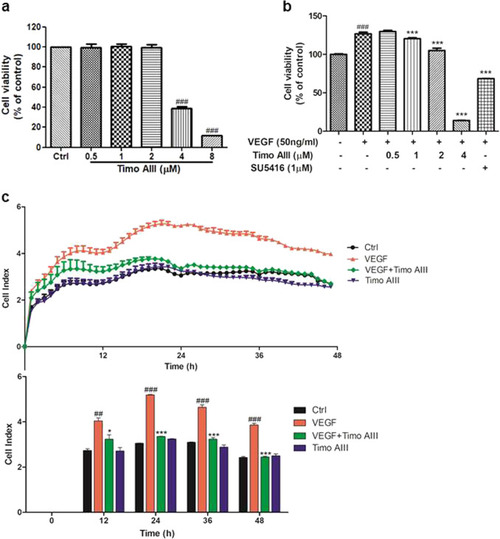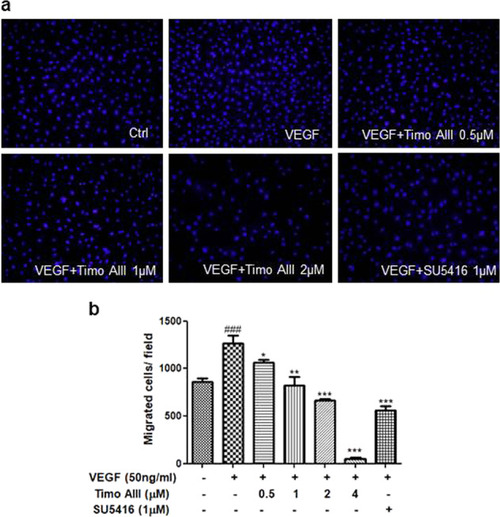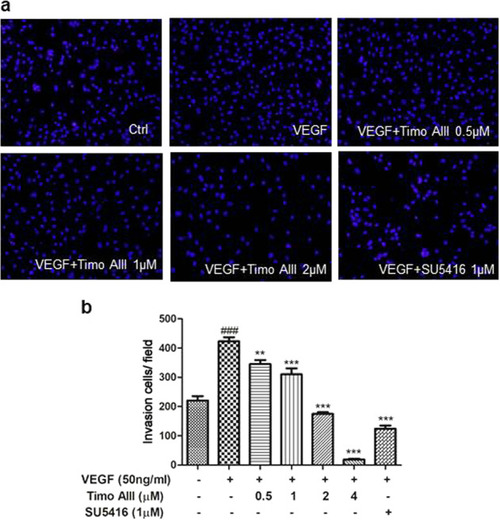- Title
-
Antiangiogenesis effect of timosaponin AIII on HUVECs in vitro and zebrafish embryos in vivo
- Authors
- Zhou, Z.Y., Zhao, W.R., Xiao, Y., Zhou, X.M., Huang, C., Shi, W.T., Zhang, J., Ye, Q., Chen, X.L., Tang, J.Y.
- Source
- Full text @ Acta Pharmacol. Sin.
|
Chemical structure of timosaponin AIII (Timo AIII, PubChem CID: 10628815) |
|
Timo AIII inhibits ISVs growth in zebrafish. |
|
Timo AIII inhibits SIVs growth in zebrafish. |
|
Timo AIII inhibits endothelial cell proliferation in HUVECs. |
|
Timo AIII inhibits VEGF-induced migration in HUVECs. The migration ability of HUVECs was measured by a classical transwell migration assay. |
|
Timo AIII inhibits VEGF-induced invasion in HUVECs. The invasion ability of HUVECs was measured by a transwell system coated with Matrigel. |
|
Timo AIII inhibits endothelial cell tube formation in HUVECs. The tube formation ability of HUVECs was examined by a µ-Slide coated with Matrigel. |
|
Timo AIII attenuates the VEGF/PI3K/Akt/MAPK signaling pathway in HUVECs. |
|
Timo AIII suppresses the VEGF-activated VEGF/PI3K/Akt/MAPK signaling pathway in HUVECs. |









